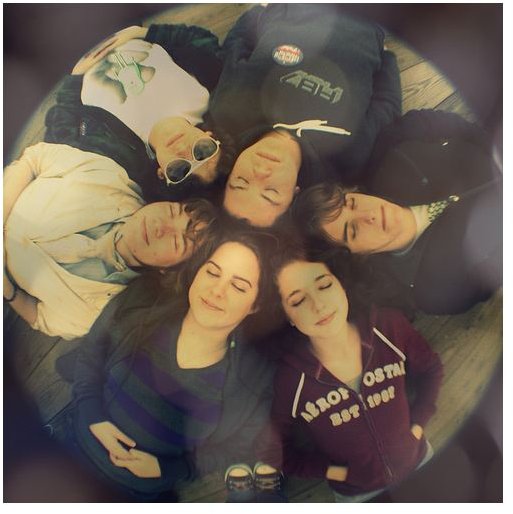Tips on Capturing Emotion with Your Digital Camera - Learn How to Take Better Photos & Pictures of Emotions
How do I Capture Emotions?
Now, this is a very tricky question. And for all I know, there might not be a perfect answer to it. Emotions, by their very nature, do not follow fixed rules…..they just happen, based on what a person feels at a given moment of time. And likewise, there’re no fixed rules for capturing emotions, too. The same scene can evoke different emotions in different people, hence emotions are subject to personal bias. From my experience, my best pictures depicting emotion have ‘just happened’. I don’t remember meticulously planning for them. Does that mean the photographer has no role to play in this? Far from true. As far as I’m concerned, the one most important rule of capturing emotion is to first feel the emotion yourself. Then, you have to click at just the right moment. Now, both of these ‘rules’, if you think about it, aren’t really easy to put into practice. So let me pen down a few points which one can keep in mind while trying to frame emotions. Most of these, rather than ‘rules’, are merely indicators on the situations where one may come across emotions that can be captured. By no means is this list exhaustive, as the sea of emotions is too vast to be captured in a single Bright Hub article!
1. Quit Saying ‘Smile’…
…or ‘cheese’, or whatever it is you say to force people to give a constant and similar expression. Be natural, and capture people just before they’re prepared for the shot. I often take two or three shots even during a ‘posed’ group photo, and the first will almost always be when the group still thinks I’m adjusting my camera, and are busy interacting amongst themselves. The lack of being conscious makes them portray true and natural emotion. The third shot is usually just after I’ve taken the posed group photo, again when people have dropped their artificial smile and assume a more natural expression on their faces.
2. Photograph Babies & Children
Babies and children are a bundle of emotions, The little ones usually haven’t still learnt the art of faking, and you can literally see the ‘truth in their eyes’. Try to fill the frame, taking care not to give too much prominence to the face….capture the child in context to his/her surroundings. That makes the photo tell a ‘story’. Another place you can try is the playground. Emotions run high in any sport, and trying to capture the expressions on the faces of the players whenever some event occurs during the sport makes wonderful practice. You may also want to try a local sports event.
3. Capture the Eyes
The eyes are the window to our soul. And if one has to isolate any one organ to truly portray emotions, it’s the eye. Human or animal, eyes usually always convey what the subject is feeling. The intense focus in the eyes of an eagle or the soft warmth in those of your pet Labrador, or the myriad expressions of a ballet dancer, the eyes are the key to capturing the emotions felt by the subject. A raised eyebrow can sometimes say what a hundred words cannot!

Photo by left-hand
4. Vary Lighting
Now, lighting affects more the ‘mood’ of the photo rather than help portray emotions. But the right lighting can surely enhance or make prominent the emotions conveyed by the subject. Light - or the lack of - can be used synergistically as well as in contrast to the emotion being portrayed. Illuminating just a part of your photo, with a flashlight or a candle can create a mysterious allure, and can work wonders in portraying sadness, fear or romance. Backlit images or silhouettes too can be tried. Especially in a high contrast image, silhouettes speak for themselves. Harsh lighting can enhance the emotions of pain, anger and depression, whereas soft diffused lighting enhances romance, peace and happiness. Additionally, color filters can also add to the emotions in a photo.

Photo by apdk
5. Play with Lenses
If you use an SLR for your shots, try playing around with different lenses. A fisheye lens can give some artistic effects, useful in enhancing or drawing attention to people’s faces and the emotions they portray. Similarly, trying zooming in close, capturing only a part of the face or torso. Likewise, zooming out and getting the subject in context to the surroundings.

Image by smoorenburg
6. Try Different Angles for Your Shot
Try shooting from different angles. A shot of a person taken from a low angle helps establish authority, as it makes the figure loom large in the frame. Panning either alone or in combination with zooming in or out creates emphasis on a particular subject.
7. Break The Rules
Emotions are best conveyed by the eyes and face. That’s the rule. So break it. Emotions can also be conveyed by other features. Say, sweat dripping down the face, the gestures made by hands and legs and other elements in the foreground or background.
Capturing Emotions
To conclude, I again reiterate that there are no absolute rules for capturing emotions with your digital camera. But if possible, try to get these things working:
1. Feel the emotion you’re trying to capture.
2. Be at the right place at the right time.
3. Don’t draw the attention of your subject. Be as unobtrusive as possible.
4. Try, try and try some more.
